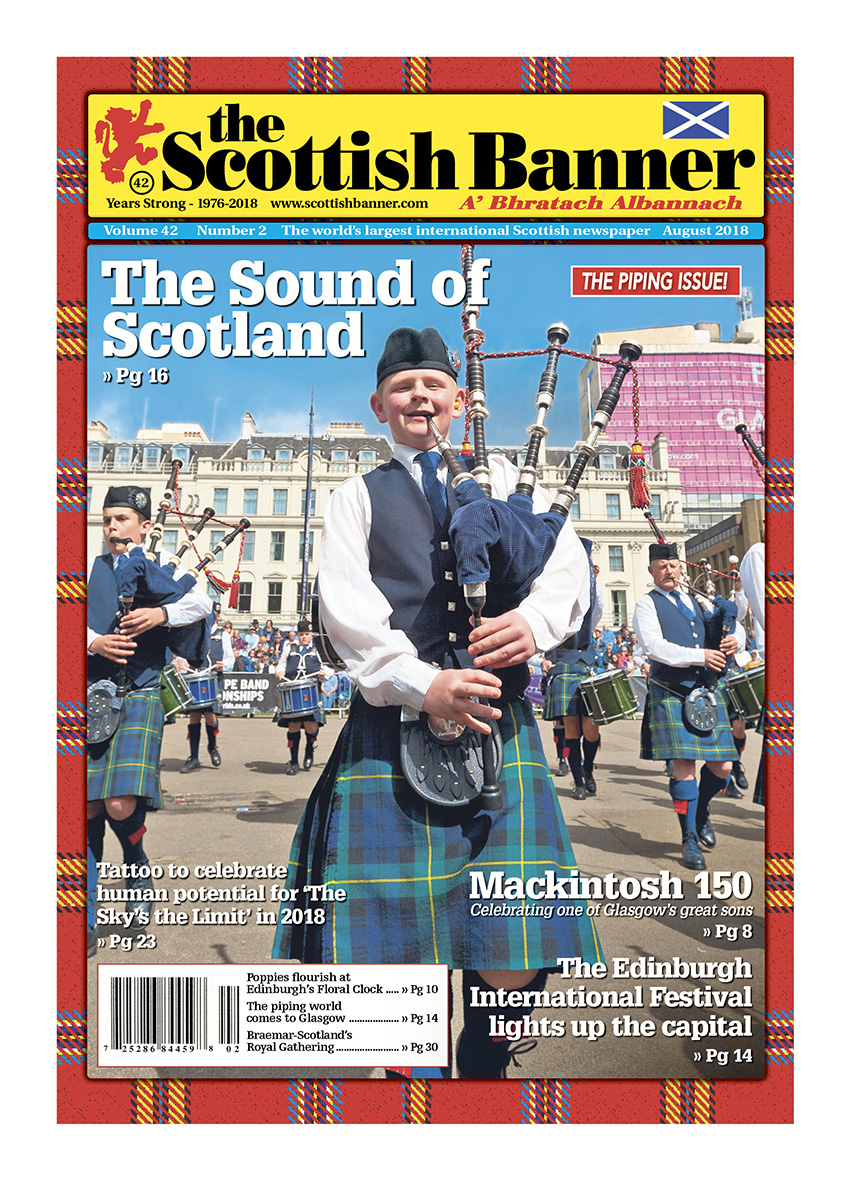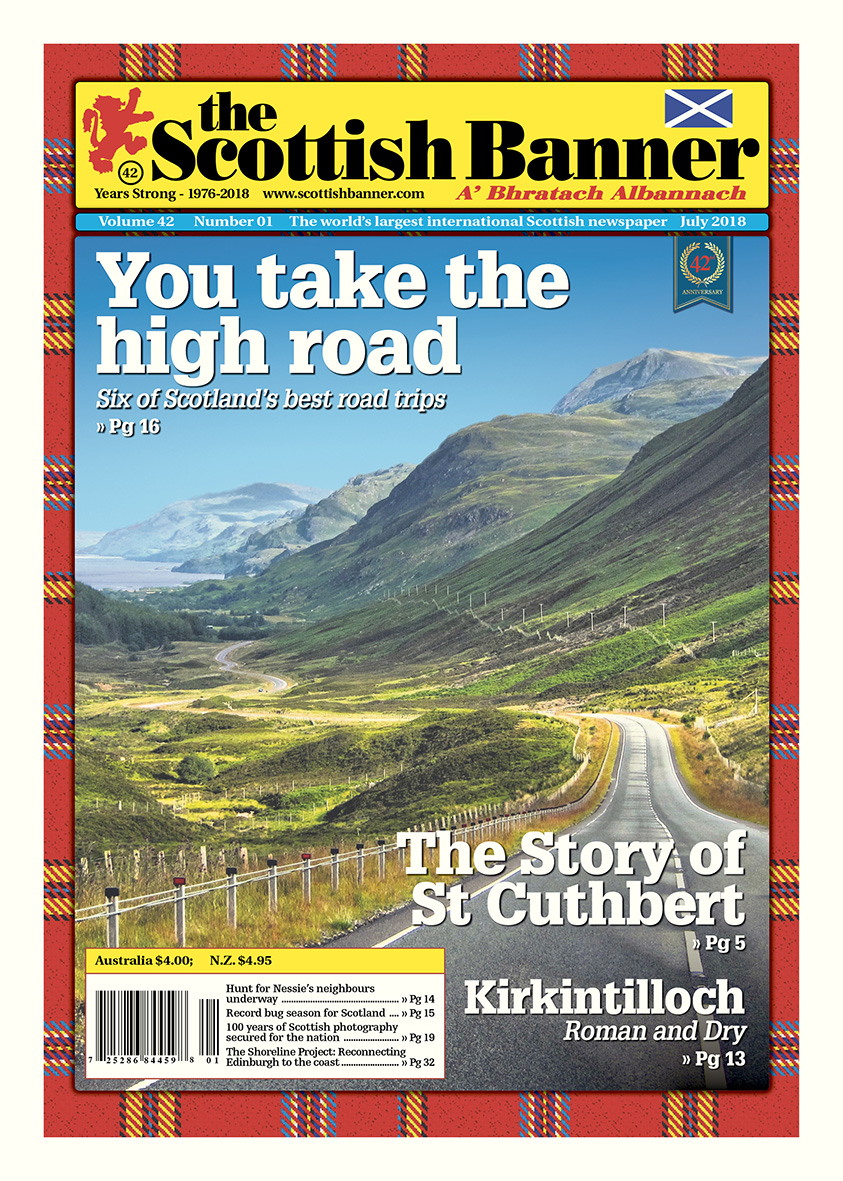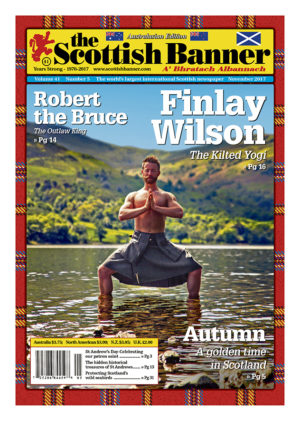-

Gracing our front cover: Playing your heart out at Piping Live! Photo: Piping Live!
August 2018 (Vol. 42, Number 02)
The Banner Says…
The gift of Scotland
Most of us find a connection at some level with our ancestry, whether it be by birth or not, and that obviously holds true to those who read the Scottish Banner. I too was immersed in Scottish culture, heritage and tradition from a young age.
Our family has earned a living from celebrating Scotland with others through ventures such as Scottish cultural events, restaurants, pubs and of course this publication for more than 40 years.
Jim Cairney
As we go to press with this issue I have reflected on my ancestry a bit more than usual as our family mourns the loss of my Father, Jim Cairney. Jim was born in Glasgow in 1931 and grew up in the shadows of his beloved Celtic Park. Dad and his older brother, celebrated actor, author and artist John Cairney, started in humble beginnings with their childhood home later torn down, but those Glasgow beginnings would shape them for life.
As a professional footballer and athlete my Father’s talents took him beyond the city and country he loved so dear and across Britain, Canada and the USA.
Later in life Dad would go on to get into the pub and restaurant business and ran welcoming establishments with a uniquely Scottish theme and friendliness about them. Passing on the gift of Scotland to his three boys was important for my Father, who made sure we knew where he was from, and in turn where we are from.
So much Scottish influence
My Father was also instrumental in getting the Scottish Banner off the ground, he along with his wife Valerie had a unique idea back in the 1970’s to start a publication for the ex-pat Scottish community.
The very first Scottish Banner offices were above a successful Scottish pub and restaurant they ran and whilst Valerie took the paper to where it got to, Jim was there in the early days to see it being born and nurtured. It was only earlier this year that Dad commented how proud he was the Banner was still going, as I am sure their 1976 business plan did not quite take the publication to 2018!
Most times when I would talk to Dad about Glasgow it was with a real sense of pride in a city he loved so much. So much so I knew regardless of where he lived or what he did, he never left Glasgow, he simply brought it with him. Today for me Glasgow is one of my three “home cities” in the world, three locations that the minute I am there they are familiar, have meaning to me and wrap me in complete comfort.
As a child having so much Scottish influence around me was simply part of growing up, with both of my parents running unique Scottish businesses, it was only later I came to realise what a gift it was to be brought up with such a strong Scottish sense of family, community and culture.
It may not have always been fun to get up at the crack of dawn to help at a Highland Games or serve up food at a Burns Supper when you are so young but it certainly shaped me. Not every child gets to be part of their ancient culture year round and today I feel fortunate to carry on the legacy of my parents through the Scottish Banner.
In this issue
There is no country in the world that is more synonymous with the bagpipes than Scotland. They are of course a global instrument but Scotland will forever be the home of the bagpipes. This month the pipes and drums will be that much more on display with some major piping events and contests taking place. We get to speak to Roddy Macleod who is not only the Festival Director of Piping Live! and principal at The National Piping Centre in Glasgow, but a highly celebrated piper himself on the power of the pipes and why they are such a cultural asset to Scotland. We have also run with the pipe band theme this month with some additional piping features showing the power of the pipes reach.
Charles Rennie Mackintosh is one of Glasgow’s great sons and the celebration around him in 2018 for the 150thanniversary of his birth shows the influence he has had to Glasgow with “Glasgow Style”. As mentioned in last month’s edition a tragic second fire has ripped through the Mackintosh masterpiece, the Glasgow School of Art. We have reached out to the School and have heard back that they have been inundated with offers of support and will liaise with the Scottish Banner in time as things settle to see if we or our readers can help support this landmark Glasgow building.
The eyes of the world have been on Britain’s Royal Family this year with weddings and births as the next generation shape a modern day monarchy. Braemar Highland Gathering welcomes Her Majesty the Queen and other members of the family each year making it one of the most popular and internationally reported Highland Games in the world.
Home to Glasgow
Soon I will be leaving my home to honour my Father at a service and say goodbye to the man who left me with the gift of his homeland. A culture thrust upon me but one I proudly celebrate and feel incredibly lucky to have inherited.
Dad will never be forgotten by his family as he is being mourned across three continents and while we grieve we can also look with love and pride on a Glasgow boy who made his unique mark on the world.
Next year Dad will go home to Glasgow to have his ashes spread as he wished and I can’t think of a more perfect place to honour the man who made me, celebrated me and gave me the gift of Scotland.
Share your story with us by email, post or at www.scottishbanner.com/contact-us





 May 2016 (Vol. 39, Number 11)
May 2016 (Vol. 39, Number 11)